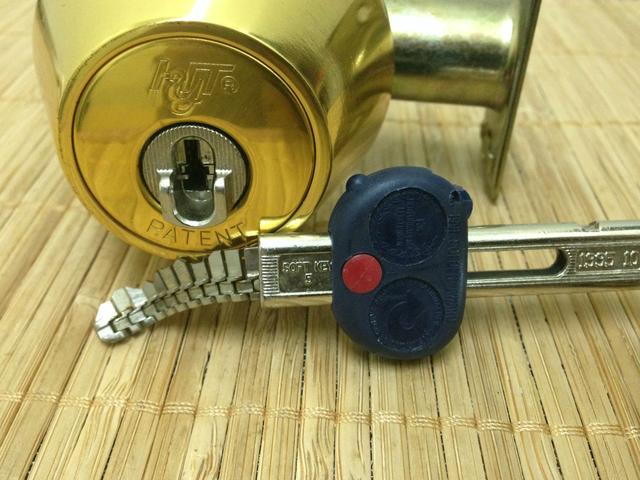Menu


In recent years, many high-tech changes have occurred in the locksmith industry. This is specifically true in terms of the types of locks that have become available. For example, who would have imagined not long ago that cell phones could unlock house doors? However, I am more fascinated by the creative mechanical designs people invented to make locks more secure and less pickable. Some of these locks feature amazing ingenuity. Up today, the chain key lock.
The chain key lock has two main components, as do most mechanical locks – the lock and its corresponding key. Most locks feature a slot in which to insert a straight key. The lock releases when the key cuts line up with the pins inside the lock, freeing the cylinder to turn and operate the bolt. In order to accommodate the straight key, the slot must go straight into the lock, as well.
With a chain key lock, the slot into which you insert the key is not straight. It curves to one side and then the other, similar to a moving snake’s body. All these curves serve a function. They make the lock virtually impossible to pick or bump. That’s because the curves prevent the pick or bump key from going into the lock far enough to work. This raises the question of how the actual key can go into the lock, and that’s where it gets interesting.

Chain key lock with chain key retracted in protected position
The key that fits into a chain key lock is unlike any key you have ever seen. At first glance, it looks almost like a traditional key. It has a rigid blade attached to a head. However, you will notice that there are no cuts along the edges or sides of the key. You will also notice that the rigid blade is hollow. That’s because that rigid blade is not the actual key. It is a protective cover for the part of the key that operates the lock.
The actual chain key is inside the protective sleeve. It is called a chain key because it is a series of small, separate metal pieces attached together in a flat chain. It is kind of like a regular flat key that’s been chopped into little pieces and then put back together again. This chain design allows the key to be flexible, similar to a flat gold chain you might wear around your neck. This flexibility allows the key to bend and follow along the curves inside the key slot and operate the lock. If you look at the actual chain key in a flat position, you will see that it has the same kinds of cuts along the top that a flat metal key shaft has. Again, the difference is the flexibility that the chain design gives the key.

Chain key lock with chain key extended to show flexible key
In order to operate the lock, you insert the protective sleeve into the slot. Only the tip will go into the slot, since the protective sleeve is not the actual key that goes into the lock. Once you insert the end of the protective sleeve into the lock, you push the bow toward the lock, similar to pushing the plunger on a hypodermic syringe. This pushes the actual chain key out from the protective sleeve and feeds it into the lock, where it winds its way along the curved slot. Once you completely insert the chain into the lock, the cuts along the key align with the pins and release the lock. Check out this mini-video showing the chain key lock in action.
It appears that these locks are no longer commercially available, so don’t expect a local locksmith near you to have one in stock. I was only able to find them on eBay. Perhaps the chain key was too delicate, and the keys were difficult to duplicate. Whatever the reason, the world has lost a fascinating lock and key design that had the added quality of being pick-proof.